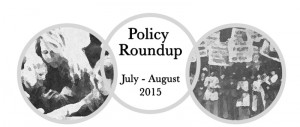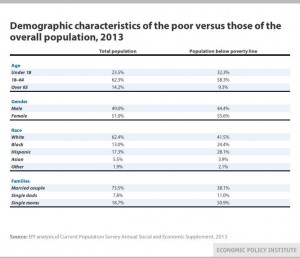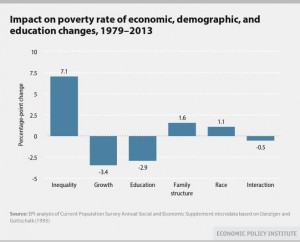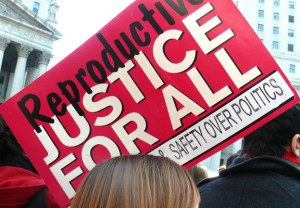I recently stole time away from a research conference in Chicago to visit the Hull House Museum. After looking through all of the exhibits, I made my way to the tiny museum shop and was mesmerized by a wall of posters containing the lyrics of songs sung by Hull House residents. These were the songs residents sang at rallies and protests while fighting for the many social reformations advocated by Jane Addams and her colleagues. Although we take many of the accomplishments of these brave crusaders for granted today, the lyrics to the song “Eight Hours” seemed especially apposite to contemporary society – so I snapped a picture and posted it to the Facebook pages of friends who are active in the labor justice movement.
“Eight hours for work. Eight hours for rest. Eight hours for what we will.”
The eight hour day movement lasted over 100 years and incited violent clashes between workers and police, finally ending with the passage of the Fair Standards Labor Act of 1938. Like the Hull House residents and union activists of the industrial era, millions of workers today are fighting to improve labor conditions by demanding a raise in the current federal minimum wage threshold of $7.25 per hour. Politicians and the public are at odds in their agreement over the economic and social outcomes a national increase would incur, but the implications for working families should not be ignored. It is impossible for a family to survive on the current minimum wage, even if there are two parents working full time.
The feasibility of financial security with a minimum wage job is even slimmer for single parent families. I used the National Center on Children in Poverty’s Basic Needs Budget Calculator to determine the hourly wage a single mother with a 5 and 9 year old in Sioux City would require to maintain a basic household budget at 215% of the poverty level, and it turns out she would need to make $18 per hour at 40 hours per week (or an eight hour day) to meet the most basic budgetary needs. The same mother in Chicago would need $24 per hour to meet a basic needs budget at 278% of the poverty level.
“The beasts that graze the hillside, and the birds that wander free, in the life that God has meted, have a better life than we.”
Since it is impossible to survive on a full time minimum wage income and employers are unwilling to pay the time and a half overtime rate for work exceeding 40 hours (as required by the Fair Labor Standards Act), many parents report working two, and even three, jobs – putting in 60 and 70 hour weeks at multiple locations. So, what happens when an employer offers a single mother $455 a week as salary (or what amounts to $11.38 per hour for a 40-hour week), an important sounding title, and the time and cost saving benefit of commuting to just one job? It seems like a dream opportunity that will reduce the psychological and physical toll of working multiple jobs, right? Not exactly…
Overtime restrictions. A full time salary of $455 (or more) a week designates a worker as exempt, meaning they are not entitled to the same federally mandated overtime pay as hourly wage workers, as outlined in a recent fact sheet from the Economic Policy Institute. Therefore, the single mother in Sioux City or Chicago working a 60 hours between two minimum wage jobs would become a “supervisor” and bring in only $20 per week more than she did with two minimum wage jobs. She will still not be able to meet her family’s basic needs budget, and she will no longer have the option of taking a second job to help make ends meet. Taking this all too common scenario into account, it’s clear that a raise in the minimum wage will not lift the boat for all low-paid workers.
“Oh hands and hearts are weary, and homes are heavy with dole; If our life’s to be filled with drudgery, what need of a human soul?”
The Fair Labor Standards Act also regulates the parameters of what defines an overtime exemption, and those standards have not been updated since 2004. In order to remedy this and bring the regulations current, the Department of Labor recently released a Notice of Proposed Rulemaking (NPRM) that would increase the weekly salary requirement for exempt status to $970, which equals $50,440 annually.
The Institute for Women’s Policy Research released an August report that found 2.7 million of the total 3.2 million estimated workers who would be affected by the approval of this proposal are women. Single mothers in particular will gain greater financial security – with 44 percent of the currently overtime pay-exempt single mothers in line to earn premium pay for long work hours. What this means is that the single mother in Sioux City or Chicago with the $455 a week managerial position will be paid overtime for working more than 40 hours per week – or she will put in an eight hour day and have discretionary time to work another job or spend more time caring for her children.
“Should he, to whom the Maker, his glorious image gave, the meanest of his creatures crouch, a bread and butter slave?”
The press has been covering the slow death of the 40-hour week for over a year, and the eight hour day movement continues. While my attendance the research conference motivated me to get busy with my research, my visit to the Hull House inspired me to dig deeper. I needed to let the voices of the past remind me that the songs of justice never fade; they simply change their tune. I owe it to those who went before me to sing with the same commitment.
“Let the shout ring down the valleys, and echo from every hill.
Eight hours for work. Eight hours for rest. Eight hours for what we will.”
Public comment. Friday, September 4th is the end of the required 60 day public comment period on the Notice of Proposed Rulemaking (NPRM). If you would like to contribute to the song, your comments can be submitted here.
//Read a fact sheet about the proposed changes from the Economic Policy Institute here.//
//Learn about the proposed changes to the regulation defining the exemptions for “white collar” employees here.//
Perry Threlfall completed her PhD in Sociology at George Mason University in May 2015. Her research focuses on the institutional and structural forces that influence inequality and mobility in single mother families. You can read her occasional blog at the Single Mother Sociologist found at smsresearch.net.















